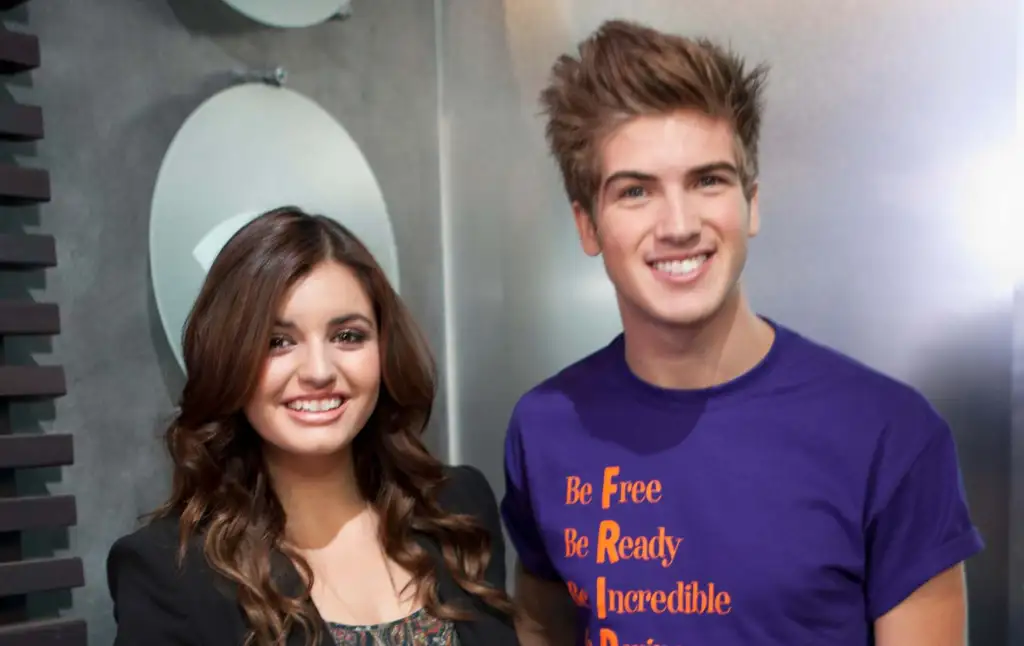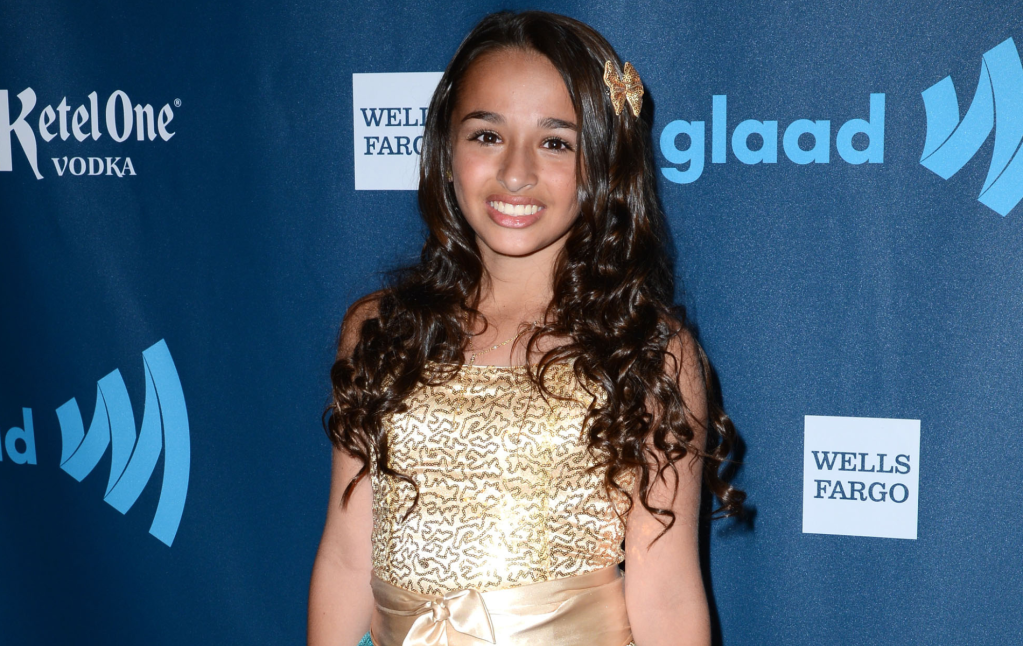
YouTube helped millions of LGBTQ+ people find their place in the world. (Getty/PinkNews)
20 years ago, on 23 April 2005, a man uploaded a video of himself to YouTube.
In the clip, titled Me at the Zoo, the man is at San Diego Zoo, in California. “All right, so here we are in front of the elephants,” he says in the wobbly 19-second footage, “and the cool thing about these guys is that they have really, really, really long trunks and that’s cool.”
To this day, that short video is the only one uploaded on his account, but, while it never gave Steven Spielberg a run for his money, it has amassed more than 355,000,000 views.
Why?
Well, that was not just any low-res video, it was the first clip ever uploaded to YouTube, and the man was Jawed Karim, one of the platform’s co-founders.
Fast forward two decades and 23 April 2025 officially marks the 20th anniversary of the video – an upload which no one could have anticipated would lead to the era-defining, career-launching content powerhouse that the site is today.
For many people, their first memories of the early years of YouTube will be of silly cat videos, bonkers animations such as Charlie the Unicorn, and grainy home movies that made global sensations of their unassuming stars, such as the young lads behind “Charlie bit my finger”, before people knew what “viral” meant.
Those formative years are a world away from the YouTube of today, the glossy content of which rivals output by megabucks entertainment firms and has made household names, and multi-millionaires, of the likes of MrBeast, Lilly Singh, KSI and James Charles.
During its 20 years, YouTube has left an indelible mark on internet history, popular culture and wider society – especially for the global LGBTQ+ community.
For LGBTQ+ creators and audiences alike, YouTube quickly became an accessible safe space for young people wanting to talk, and consume content, about their experiences and identity, as well as helping them find people with whom they could connect and relate. For the first time, queer people could truly own their story – unfiltered and unscripted.
This offered LGBTQ+ individuals the kind of visibility that mainstream media had long failed to provide in the more-traditional forms of film and television.
“People forget because of where we’re at right now but it really was not accepted at that time,” YouTuber Joey Graceffa, who rose to fame in the early days of the platform, told PinkNews. “The internet was a safe space at the time. Now it’s a toxic mess, but the internet became this safe place for the queer community.
“The internet was the safe place and the real world was the scary place.
“It was a time where everyone was finding their people. A lot of people at the time on the internet were the weirdos, the nerds in their communities, and found community online. Meeting up in person with people with similar interests was so new, and content creating was so new that there was a lot of excitement.”

Graceffa became known on YouTube for his vlogs, challenge videos and, notably, his coming-out video. He was one of the first YouTubers to share his LGBTQ+ journey with millions of viewers.
His “Don’t Wait” music video, where he came out publicly, racked up more than 43 million views.
Graceffa admitted it was one of the “pivotal moments” of his early YouTube career. “That wasn’t necessarily my plan of how I was going to come out, it just ended up becoming that,” he said.
“I remember seeing Tyler Oakley talk about his coming out, and Troye Sivan even. Those were my peers [who] really helped me build the confidence to be able to come out.
“Building up the courage, based [on] my experience of the internet making fun of, or bullying, me for having gay tendencies, or people thinking I was gay, made me nervous for how it would be to come out.
“But because I had such a strong community around me, I felt comfortable and confident in myself, I felt fine regardless of what the response was. I was very happy with the outpour of support when I actually did come out.”
As YouTube became bigger, with more and more people using it to create content, one couple connected with the sapphic part of the LGBTQ+ community: Rose and Rosie.
The couple uploaded their first video together in 2011 and have remained on the platform ever since, sharing their love story, marriage and news of their children with a committed viewership of close to one million subscribers.
“We were just making content for fun. We weren’t trying to be famous, weren’t trying to be anything,” the couple told PinkNews of their early years as YouTubers, adding that the reason so many of their first videos were so popular was because the content was “so raw” and “messy”.
Rose is a lesbian while Rosie is bisexual, and beyond sharing updates about their lives, and taking part in funny challenges, their channel became a valuable resource for young fans exploring their own sexuality and looking for authentic lesbian and bi representation.
“YouTube, especially back when we started, was a place that was safe,” the couple added. “It brought people together in a community that was again safe and it showcased people just living their lives. Hopefully, people like us.”
Nowadays, they share glimpses into their lives as same-sex parents to two sons and admitted that when they decided to have children, the lack of information online took them by surprise.
“I thought you’d just go online and there’d be a place that says ‘this is how you do it as a same-sex couple’. How wrong we were. There was nothing there, no information.
“So, we recorded the whole thing and there was ups and downs and trials and errors.”
YouTube content helped to normalise same-sex relationships but also provided a place for queer youth to go, especially if they were not out to their parents or caregivers, Rose and Rosie added.
“That really helped a lot of people to see that you can actually exist in [a] same-sex relationship and just get on with your life. [We hope] that’s the kind of safety and comfort people got from our videos and still get from our videos.”
But, as queer stories found their home on YouTube in the early years, the trans community continued to remain largely invisible in mainstream media. That began to change with creators such as Jazz Jennings.
From a young age, Jennings used the platform to document her transition and daily life, giving audiences an honest, first-hand look at what it meant to grow up transgender.
Her content, which included candid vlogs and Q&As, helped demystify the trans experience, breaking down stereotypes, answering questions many were too afraid to ask, and showing her trans viewers that they weren’t alone.
“When I began my journey on YouTube there were no teenagers sharing their experiences, I was first,” Jennings told PinkNews.
She began by posting mermaid-tail videos and viewers quickly recognised her from an episode of 20/20 where her family spoke of what it was like to have a trans child. People expressed their desire to see more from her, leading to the content about her transition and day-to-day life.

“The first video I made talking about my journey as a transgender was the Letter to the World video. I wrote this speech declaring to the world that I am trans and that I am proud to be trans,” Jennings said. “That got a lot of traction and people were like ‘we want to see more, keep talking about your experience’.”
The video and what followed was “raw and authentic” and she spoke from the heart.
“What really helped a lot of people was seeing my confidence,” she continued. “I was proud to be me and I wanted to encourage other people to be proud of who they are.”
Since then, YouTube has become a vital platform for the LGBTQ+ community, where they can share their experiences, build community and reach millions.
While challenges still exist, the impact YouTube has had on LGBTQ+ lives, both on and off the screen, is undeniable.
Share your thoughts! Let us know in the comments below, and remember to keep the conversation respectful.
How did this story make you feel?
